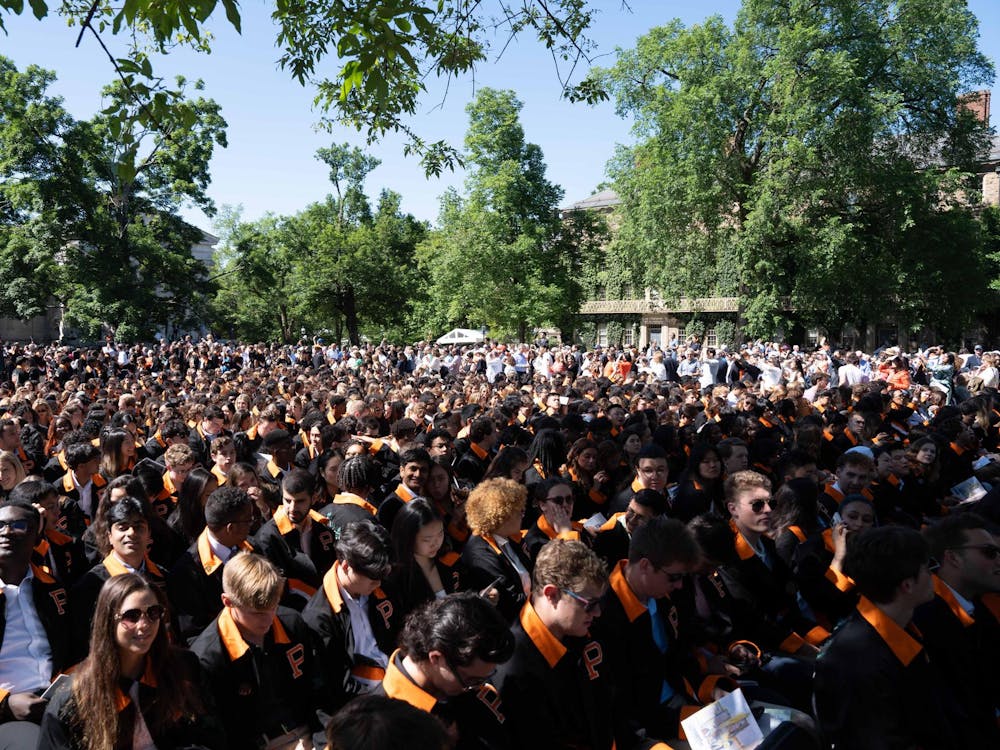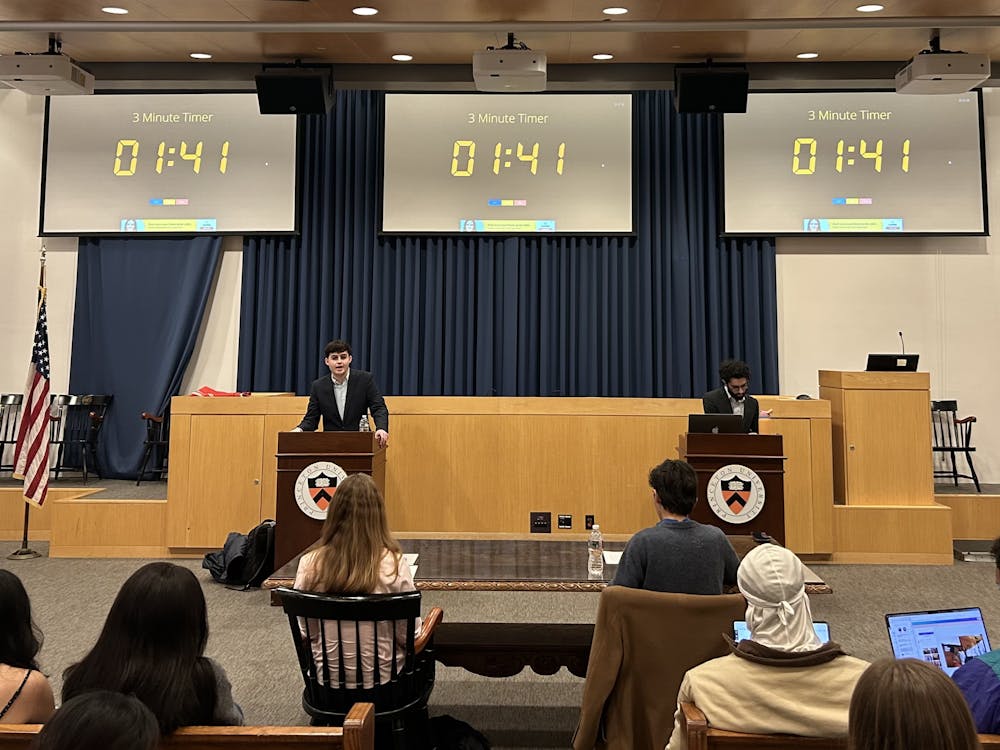The phenomenon of hyperactive statuary, which has traditionally been limited to the more appropriate realm of imaginative fiction, is turning out to be an acute problem on the Princeton campus. Our monuments of marble, bronze and prestressed concrete will simply not stand still. Now you see 'em, now you don't.
I have chiefly in mind the quite bizarre and recent happenings on the lawn in front of the art museum, but the study of monumental kinetics in Princeton could be pushed back at least to the 1920s. For instance, in an obscure corner of the foyer of Jadwin Gym there is a large bronze statue of a magnificent Aryan youth in knickerbockers and football shoes, an Oxford scholar's gown draped sexily from one shoulder, with a couple of large quarto volumes in the crook of his left arm. A prevaricating bronze tablet identifies him as a "Princeton student" of the fin-de-siècle. "Princeton student," my ass! This is the famous "CHRISTIAN Student" (q.v. in Leitch's "Companion") commissioned in commemoration of the founding of the World's Christian Student Federation in 1895. I have a photograph of circa 1915 in which he stands atop a piously inscribed plinth on the south side of East Pyne. Encouraged by embarrassed officials, he wandered as far as Massachusetts for some decades before returning, incognito and minus pious plinth, to his ignominious berth in Jock Alley. And you think you got a lousy room draw.
In literature, statues move around to some purpose. On our campus their comings and goings seem aimless. In ancient Ovid we read that the sculptor Pygmalion made an ivory woman of such surpassing beauty that he fell in love with it, or her, depending on your point of view. The power of positive thinking and the convenient intervention of Venus animated the statue first to ambulation and then, even more to Pygmalion's satisfaction, to recumbency; but there is no evidence that she wandered around campus. In Molière's "Don Juan, or the Stone Dinner-Guest," a lapidary effigy of one of Juan's victims takes the homicidal seducer off to Hades. The obscurities of the French plot are greatly clarified in Professor PDQ Bach's remake, "The Stoned Guest," second only in the contemporary operatic repertory to the same composer's brilliant "Oedipus Tex."
For the last three decades there stood in front of the art museum a Picasso statue, in torpid immobility, called "Head of a Woman." I had just about gotten used to her when one day I noticed that she had decamped. I thought at the time that she had temporarily absented herself to convenience the construction of the Marquand Library addition. But the construction was completed, and still she didn't return. Then one day, rushing for the Dinky, I saw that she had taken up residence south of Spelman, where with good reason she casts a very dubious glance in the direction of New South.
Then I left town briefly. When I returned these, well, things were lined up against McCormick Hall: 20 of them arrayed in military formation, huge, headless, armless heavy metal bodies. These emperors actually do have clothes, just no shoes, allowing the viewer to ponder the mystery of their furry simian feet. I think the title of the group is "Darwinian Disarmament." The only analogies that come to mind are cinematic — the Pod People, perhaps, or extras from "Night of the Living Dead".
Whether 20 male bodies without heads adequately requite one female head without a body is a question requiring subtle adjudication. In this is it not wholly dissimilar of my favorite conundrum of medieval erotic casuistry: If you are going to be married to a mermaid, which half of her do you want to be fish?
Apropros of Joe Christmas in Faulkner's "Light in August," a student once told me "I know it's a Christ-image, but a Christ-image of what?" I dimly grasp a similar semisignificance in the latest bronze invaders of the campus. If you walk around behind them, you can see that these forms are empty concavities. I think that's a deep allusion to Eliot's "Hollow Men":
We whisper together Are quiet and meaningless As wind in dry grass Or rats' feet over broken glass In our dry cellar.

They are definitely "making a statement," but then again so was my neighbor L. D. Perry when he decorated a five-acre field of hickory sprouts with about 17 defunct Chevrolets and a couple washing-machine skeletons. That time the EPA intervened to save us. John V. Fleming is the Louis W. Fairchild '24 professor of English. His column appears on Mondays. He can be reached at jfleming@princeton.edu.








